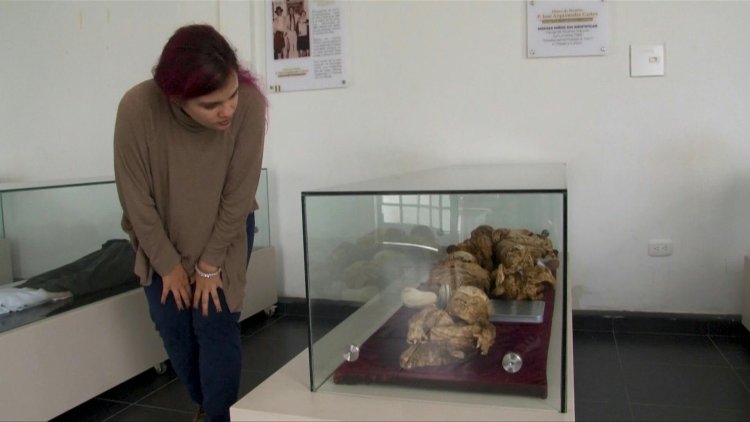Colombia's Mummified Enigma

In the quaint town nestled in the Colombian Andes, a peculiar and mystifying occurrence captivates both experts and residents alike: the phenomenon of spontaneous mummification.
Clovisnerys Bejarano's poignant tale epitomizes this enigma as she kneels before the glass case holding her mother's petrified remains, seemingly asleep despite her passing thirty years ago.
Saturnina Torres de Bejarano's preserved form, adorned in her familiar rose-print dress, grips a fake carnation in her hands, evoking an eerie semblance of life frozen in time.
This macabre spectacle is not unique; thirteen others from San Bernardo share similar fates, confounding all attempts at explanation.
The origins of this phenomenon trace back to the early 1960s, when the first mummified bodies emerged from the vaults of the San Bernardo cemetery.
Despite the humid climate, traditionally conducive to decomposition, these bodies remained remarkably intact. Local lore, rife with speculation, offers diverse interpretations: some view it as a posthumous award for virtuous deeds, while others perceive it as a form of divine punishment. However, scientific scrutiny fails to yield conclusive answers.
Despite the absence of definitive explanations, the town's museum proudly showcases these preserved relics, serving as a testament to San Bernardo's inexplicable anomaly.
As researchers continue to probe this perplexing phenomenon, the allure of San Bernardo's mummies persists, inviting speculation and wonder.
For now, the town's enigmatic residents, amidst the whispering winds and towering Andes, hold the secrets of spontaneous mummification close to their hearts, a testament to the enduring mysteries of life and death.















